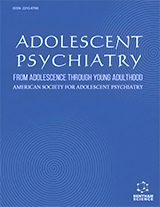Abstract
Stress is a well-known predictor of somatic disease. Although most clearly demonstrated for Coronary Heart Disease (CHD), stress has also been shown to be involved in several other somatic diseases e.g. rheumatoid arthritis, cancer and for pain syndromes. The psychoneuroendocrine mechanisms of these effects have been examined in terms of cortisol levels and cortisol dynamics. The aim of this chapter is to investigate if there are associations between salivary cortisol and somatic disease in terms of cardiovascular disease (CVD), rheumatoid arthritis, cancer and pain, and whether divergent results can be explained by differences in the theoretic assumptions made and methods used. A literature research identified eight articles on CVD, four articles on cancer (all breast cancer), three papers on rheumatoid arthritis and 15 papers on the term pain. CVD, CHD and atherosclerosis were associated with low morning cortisol levels, high evening cortisol levels and a flat diurnal curve. Among patients with metastatic breast cancer, high evening levels and low diurnal deviation characterized patients compared with healthy controls, and low diurnal deviation predicted poorer survival. No relationships with salivary cortisol were found early in the breast cancer disease process. Patients with rheumatoid arthritis, especially with high disease activity, had higher evening levels and a poorer reactivity for laboratory stress. In most studies on pain, low morning cortisol, high evening cortisol, low cortisol awakening response and low diurnal deviation were associated with more pain. Fibromyalgia and pelvic pain among men were an exception. We found few studies where the relationship between salivary cortisol and somatic disease/illness was analyzed. However, among these, a relatively large proportion showed significant findings. The results suggest that, across outcomes, low morning cortisol levels, high evening cortisol levels and a low dynamic cortisol response to stress are related to poorer somatic outcome.
Keywords: Salivary cortisol, cardiovascular disorders, breast cancer, rheumatoid arthritis, pain, single time point measures, deviations measures, area under the curve, laboratory test, dexamethasone.






















